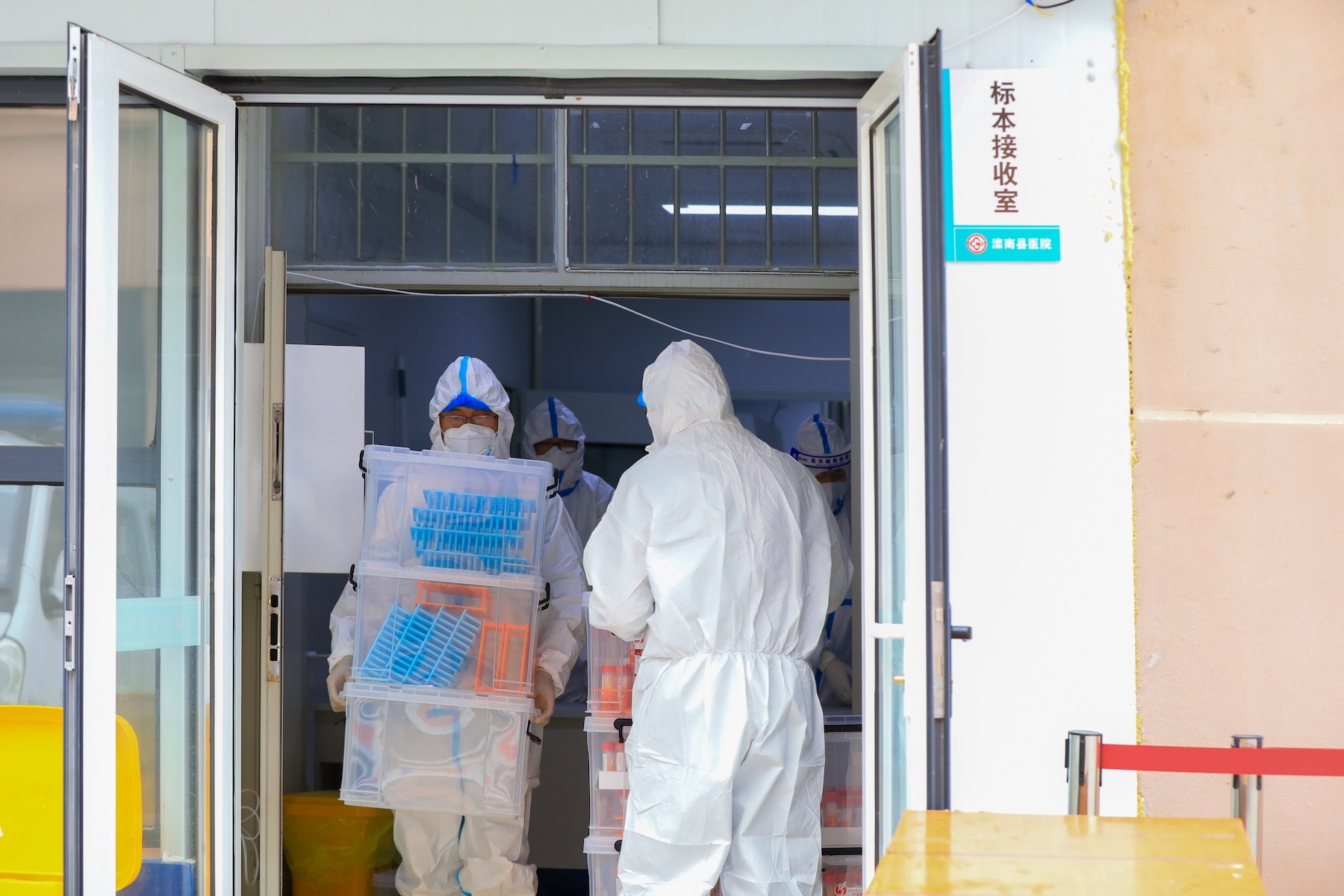In this edition: Medical workers and medical students staffing hospitals and fever clinics are overwhelmed with an influx of patients; some workers are told to work as normal if their Covid-19 infection is mild; and the manufacturing sector sees production stoppages and layoffs during what is typically the peak production period.
Medical workers overwhelmed by surge of Covid-19 cases across China
THE STORY: With the sudden relaxation of pandemic prevention measures in China, patients flooded into hospitals, which had difficulty treating the influx of patients and separating Covid-19 positive patients from those with other medical conditions.

Photograph: chinahbzyg / Shutterstock.com
CONTEXT: Many medical workers recently contracted Covid-19 on the job, with some hospitals reporting that 20-60 percent of staff were positive, leading to a staff shortage. In Beijing, one fever clinic reported that medical students were staffing the facility: “The nurses have run away.”
WHY IT MATTERS: Medical students began protesting their lack of labour protections as they have been left to staff medical facilities during this critical phase. These medical trainees are only paid a small stipend of about 200-1,000 yuan per month, but they perform the same work as full-time employees. In December 2022, CLB’s Strike Map recorded seven such incidents in Hunan, Sichuan, Jiangxi, Jiangsu, and Chongqing; and our Calls-for-Help Map recorded two incidents, one in Beijing and one in Jiangsu.
Some workers told to go into work even if testing positive with Covid-19
THE STORY: Some workers have been told to report to work even if they have Covid-19. Others have been told to remain at home, but they are required to take sick leave or annual leave to cover their workplace absence. The sudden relaxation of pandemic prevention measures has raised many labour rights concerns, and enterprises are responding in different ways.
CONTEXT: Is Covid-19 a work-related injury? Guidelines from the Ministry of Human Resources and Social Security issued in early 2020 state that Covid-19 infection contracted during the course of work is a work-related injury for medical staff; for other workers, although not considered a work-related injury, full wages should be paid during the Covid-19 infection period.
WHY IT MATTERS: Different types of workers have different labour concerns. White-collar workers may have greater labour protections to begin with and more bargaining power regarding health and safety at work. But for others, like migrant workers and factory workers - such as those at Foxconn and Pegatron electronics factories - they may prefer to continue working and earning an income. Their stories of being isolated inside the closed-loop system and having the cost of quarantine meals deducted from their pay show that their labour rights are not protected and they have little recourse: “I am more afraid of poverty than infection,” said one worker.
Top manufacturers halt production, lay off workers
THE STORY: China’s economic downturn and the pandemic have greatly affected the manufacturing industry. In late December, Tesla’s Shanghai factory suspended production, Xiaomi began layoffs, and textile producers cut short their season to avoid business losses as a result of reduced orders. Apple also announced it would make changes to its supply chains. A contributing factor is that the industry is facing a labour shortage because of Covid-19 positive workers and changing labour trends.

Photograph: humphery / Shutterstock.com
CONTEXT: China’s manufacturing industry has been in decline, as evident in labour patterns that have changed dramatically since the US-China trade war and production moving overseas. The global pandemic caused shutdowns and closures in early 2020, but business resumed for a period before the waves of regional lockdowns in 2022 again affected production. In addition, younger workers are less willing to join production lines, preferring flexible employment or lower-intensity jobs.
WHY IT MATTERS: For workers, manufacturing used to be a relatively stable job, although a low-paid and hazardous one. Today, manufacturers are increasingly relying on a gig economy model for hiring seasonal and temporary factory workers, rather than full-time workers with standard contracts and benefits. This is lowering the standard for labour rights in an environment where job options and labour protections are already slim.
Further CLB Reading:
- Nurse shortage comes face to face with low pay, inadequate training and the pandemic (September 2022)
- Shanghai’s frontline workers document their struggles online under lockdown (May 2022)
- Worker protests at Zhengzhou Foxconn highlight labour-capital problems in global supply chain (November 2022)
CLB's November 2022 labour news roundup is available here.
